Is it possible to clean an iron with citric acid: 6 simple tips
A layer of burnt scale has appeared on the iron, steam is not flowing well, and things are not being ironed properly? It's time to clean your iron, and you don't need any special products for this: use citric acid. Experienced housewives widely use these granules, in particular, they use them to remove scale.
Why does the iron get dirty, why wash it?
Any water, to one degree or another, contaminates the iron from the inside. The walls of the tank become overgrown, the channels supplying water to the sole, and the nozzles on the platform itself become clogged. The harder the water, the faster the process.
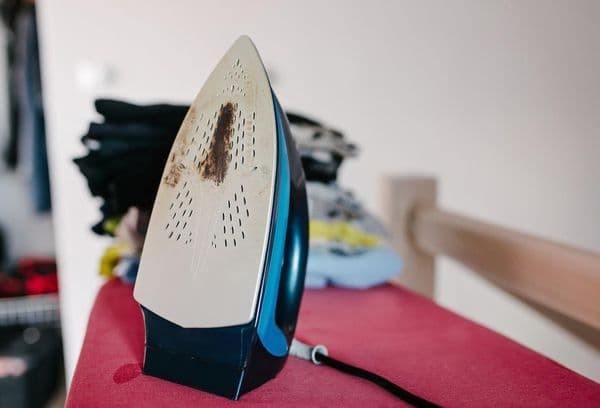
Table. How quickly lime and rust accumulate in an iron:
| Water type | Time it takes for the iron to clog, months. |
| From the tap | 2 |
| Filtered | 3-4, depending on the serviceability of the cleaning systems |
| Filtered and boiled | 5—6 |
| Special | 6 |
It is strictly forbidden to pour mineral water into the iron, be it “Aqua Minerale” or “Shishkin Les”. The salts in this water are useful only for humans. They will destroy the technology.
Many housewives forget to empty the water from the reservoir after ironing - this aggravates the situation, especially if the iron is stored on a stand, and drops of water constantly flow into the supply channels.
How does an iron work?
There is a water container under the handle and regulator. Through special channels and holes on the sole, water drops onto the sole. Due to high temperatures, it quickly turns into steam, moisturizing the fabrics and facilitating the process of smoothing them.
Thus, it is necessary to clean the iron from scale inside and outside to prevent it from breaking and protect things from white streaks and red dirt.
Cleaning with citric acid: three useful tips
Citric acid is widely known as a means for removing scale in electric and regular kettles, as well as plaque on plumbing parts. The substance softens lime build-up quite well, while being safe for the human body, equipment and the environment.
1 - reservoir
In the case of an iron, there is no need to boil the citric acid solution in advance. Just pour it into the tank and connect the device. The water inside will heat up.
How to prepare a cleaning solution: you need to dilute a pack of powder in cool water and mix thoroughly until all the crystals dissolve. Proportions: 25 g of lemon per glass of water (200 ml). A strong concentration is not recommended, as the rubber and silicone gaskets of the device may be damaged.
We clean the iron from scale inside at home:
- Pour the solution into the water tank and close the lid.
- We connect the device to the network and set the maximum temperature.
- Modern models "Tefal" and others have a shutdown function when overheated - after about 2-3 minutes. We wait for this time, then repeat the cycle. Now you can disconnect the cord from the outlet; the solution in the tank has heated to the desired temperature.
- You will need a container to collect the water coming out of the sole. This could be a basin or a large saucepan. Some housewives use an unnecessary thick piece of cotton fabric, but this takes longer.
- Place the heated iron parallel to the dish and begin to evaporate the solution. We use a special button to supply steam. Water with pieces of softened lime begins to flow out of the device.
- During the washing process, the solution bubbles and emits an unpleasant odor - don’t be alarmed.
- If necessary, repeat the cleaning, only prepare the solution again.
- A heavily soiled device may require 2-3 procedures. We make sure that all pieces of scale come out.
- Additionally, it is worth rinsing the tank with clean water to remove any remaining citric acid.
- After cleaning, wipe the soleplate of the iron with a damp and clean cloth.
2 - sole
External contamination is no less disturbing than a clogged water tank. The soleplate of the iron can also be cleaned with a lemon. Instructions:
- Dissolve 50 g (two packs) of citric acid in a liter of water.
- Pour the solution into a wide baking tray, place it on the stove and heat it.
- Carefully apply the sole of the iron to the solution so that it does not cover more than 1.5 cm. The other parts of the body are strictly above the water.
- We hold the iron for about 10 minutes.
Advice
A gentler way to clean soles is to iron a cloth soaked in a solution of citric acid.
3 - supply channels
If the channels are so clogged that the steam from the tank is not able to break through them, then you will have to resort to one trick:
- Prepare a disposable medical syringe.
- Fill it with lemon juice solution.
- Introduce the liquid from the outside, piercing the lime deposits.
- After some time, try steaming the iron.
- If that doesn’t work, moisten small pieces of cotton wool (from cotton swabs) and place them on the sole. The solution should corrode a small part of the plaque so that it becomes possible to clean the channels in the standard way.
After all stages of cleaning, you need to check the iron: iron an unnecessary piece of light-colored material with moisture. If there are no stains, streaks or deformations, then you can use the technique as usual.
Note: three alternative cleaning methods
We offer three more ways to clean your iron inside and out. You will need the same affordable products as citric acid: you can find baking soda, vinegar and salt in any home.
Method one, with vinegar:
- Mix water and vinegar in equal proportions. Do not use concentrated acid!
- Fill the solution until one third of the reservoir in the iron is filled.
- Heat the iron to maximum temperature. Be sure to place it vertically to prevent the solution from leaking out prematurely.
- Evaporate the liquid completely and repeat with clean water.
Method two, baking soda + vinegar:
- There is no need to sprinkle baking soda on the sole to avoid small scratches. Dirt quickly accumulates in the cracks, such a device will be worse for ironing, and the likelihood of fabric deformation will increase. It is better to use a soda solution in the form of a “gruel” or a composition with soda and vinegar.
- Mix baking soda with liquid to form a thick paste and apply it to the dirty sole. First heat up and then turn off the iron. The surface should be slightly warm.
- Wipe the contaminated areas with a thick cloth, removing plaque.
Method three, cleaning the soles with salt:
- Salt, like soda, is a fine abrasive, so you should not use it in its pure form on Teflon iron soles. Instead, wrap a small handful of salt in damp cheesecloth.
- This method is useful when a large rusty build-up has formed on the iron. Salt as a solid will help scrape off the lime, and gauze will protect the surface from scratches.
- The iron, as in the previous method, should be slightly warm.
Advice
Do not use metal or other hard brushes, knives or scrapers, as this will permanently damage the soleplate of the iron.
Housewives also use other available means for cleaning: mineral water, toothpaste, hydrogen peroxide, laundry soap, a special anti-scale agent, etc.
Be careful when cleaning your iron: hot temperatures are harmful to your skin. It is best to hold the device at arm's length. Don’t forget to also tidy up the body of the iron: wipe it with a damp cloth and soapy water. Tidy household appliances are another plus for a cozy atmosphere in the house.
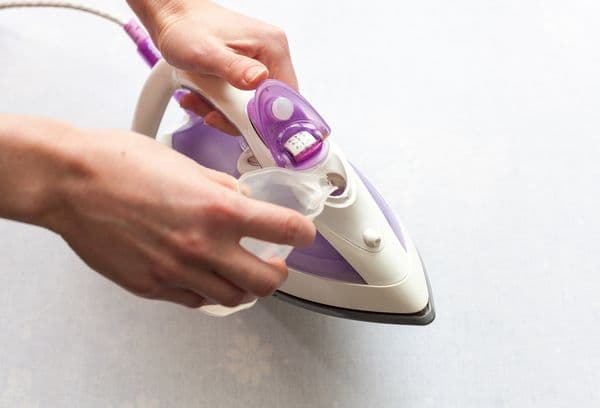
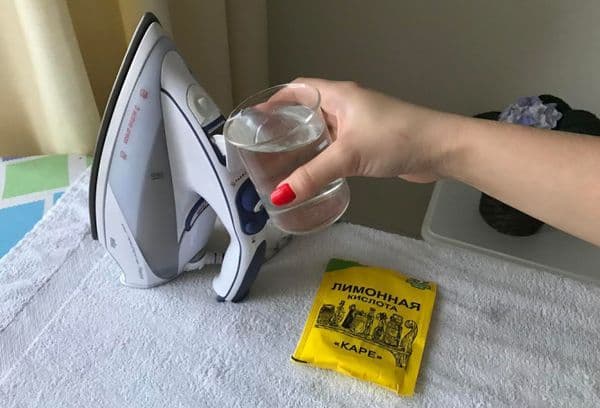
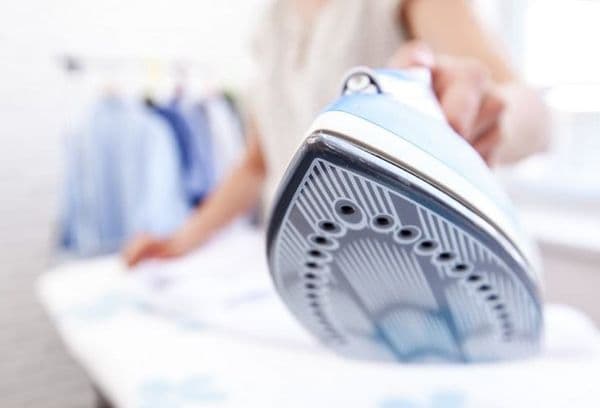
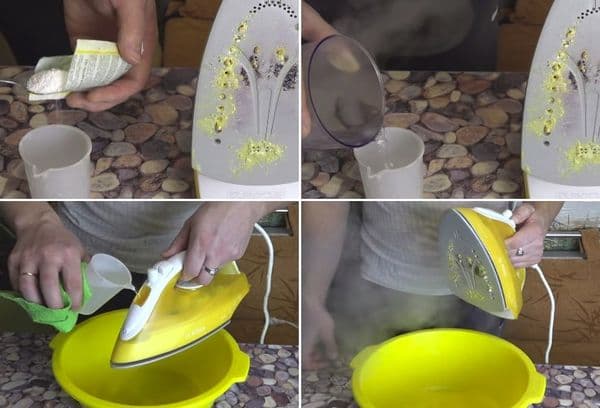
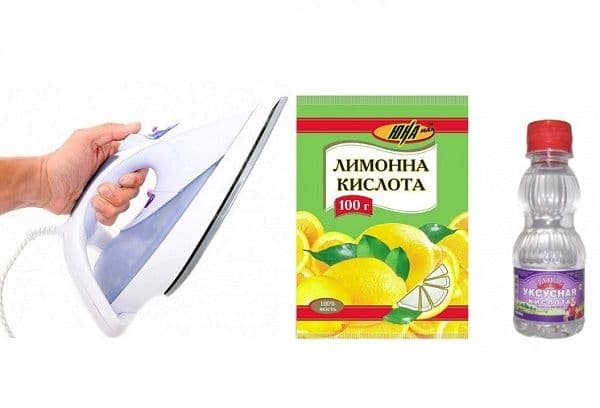
But what if my iron is not an electric “regular” one, will this method also work for me?
I cleaned the iron with citric acid. Now like new. For preventative purposes, it would be necessary to sometimes pour a solution of citric acid into the tank to prevent the formation of plaque.